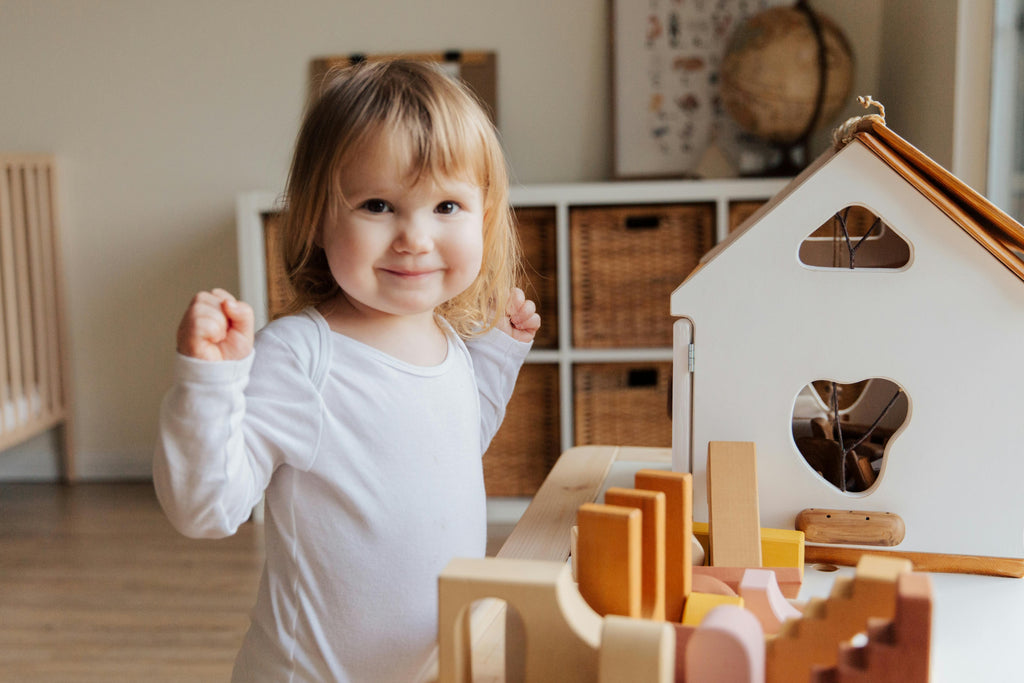As parents, ensuring the safety and well-being of our little ones is our top priority. One of the most critical aspects of child safety is preventing choking hazards. As parents, our top priority is ensuring the safety and well-being of our little ones.
Central to child safety is the crucial task of preventing choking hazards, which demands our utmost attention and diligence. Understanding the risks and implementing preventive measures can create a safer environment for our children to thrive.
In this guide, we'll dive into essential strategies for safeguarding your children from potential choking incidents and identifying risky items in your home.

Preventing Choking Hazards: Protecting Your Precious Ones
Nothing is more important than the safety of our children. From the moment they come into our lives, we become fiercely protective, doing everything we can to shield them from harm. However, amidst the joy and chaos of parenthood, it's easy to overlook potential dangers lurking in our homes, particularly choking hazards.
But fear not, dear parents, for with awareness and proactive measures, we can significantly reduce the risk of choking incidents and ensure our little ones thrive in a safe environment.
Small Objects
Everyday household items like coins, buttons, marbles, and small toy parts may seem innocuous. Still, they pose a significant choking risk, particularly to young children who are interested and prone to exploring their surroundings through oral exploration. These small objects can easily be mistaken for toys or snacks. They can become lodged in a child's throat, obstructing their airway and leading to potentially life-threatening situations if not promptly addressed.
Food Hazards
While mealtimes are moments of nourishment and bonding, certain foods carry an inherent risk of choking, especially for young children still mastering the art of chewing and swallowing.
Grapes, nuts, popcorn, and hot dogs are among the culprits known for their potential to block a child's airway if not consumed with caution. Their size, shape, and texture make them particularly challenging for young children to manage safely, emphasising the importance of vigilant supervision during mealtime.
Unsecured Toys
While toys are meant to spark joy and foster creativity, not all playthings are created equal regarding safety. Toys with small parts or detachable components pose a significant choking hazard if they break apart or are ingested by curious toddlers.
From puzzle pieces to action figure accessories, these seemingly harmless items can quickly become dangerous if they find their way into a child's mouth, underscoring the necessity of selecting age-appropriate toys and conducting regular safety checks.
Loose Household Items
In a bustling household, it's not uncommon for small items like buttons, beads, or loose screws from furniture to find their way onto the floor or within reach of young children. While seemingly insignificant, these objects can pose a serious choking hazard if swallowed accidentally.
Their small size and unfamiliarity to children make them particularly enticing, highlighting the importance of maintaining a clutter-free environment and promptly addressing any loose items that may pose a risk.
Improperly stored items
From batteries to magnets to small office supplies, everyday items found in most households can pose a choking risk if not stored securely out of reach of young children. Low cabinets, open containers, and unsecured drawers provide easy access for curious little hands, increasing the likelihood of accidental ingestion. By implementing proper storage solutions and keeping hazardous items out of reach, parents can significantly reduce the risk of choking incidents and create a safer environment for their children to thrive.

Understanding Choking Hazards
Choking hazards are a pervasive concern for parents, as young children are naturally curious and prone to exploring their environment through oral stimulation. From everyday household items to certain foods, the potential dangers lurking in our homes require careful consideration and proactive measures. Parents can safeguard their children from possible harm by understanding choking hazards, implementing preventive strategies, and promoting a safer living environment.
Identifying Common Culprits
Choking hazards come in various shapes and sizes, often disguising themselves as innocuous everyday items. Small objects such as coins, buttons, marbles, and batteries pose a significant risk to curious toddlers prone to putting everything in their mouths. Food items like grapes, nuts, popcorn, and hot dogs can easily obstruct a child's airway if not consumed mindfully.
Assessing Toy Safety
While toys are meant to bring joy and stimulate a child's imagination, not all playthings are created equal regarding safety. When selecting toys for your little ones, choose age-appropriate options free from small parts or detachable components that could pose a choking hazard. Regularly inspect toys for wear and tear, ensuring they remain intact and safe for play.
Supervision is Key
The most crucial aspect of preventing choking incidents is vigilant supervision. Keeping a watchful eye on your child, especially during mealtime and playtime, can help you intervene swiftly if they attempt to ingest a hazardous object. Remember, it only takes a moment for an accident to occur, so stay present and attentive whenever your child is at play.
Creating a Safe Environment
Designing a child-friendly environment entails meticulous attention to detail. Keep small objects out of reach by storing them in secure containers or cabinets with childproof locks. Invest in furniture and household items that adhere to safety standards and are free from small parts that could break off easily. Additionally, consider securing electrical cords, blind cords, and curtain ties to prevent accidental strangulation.
First Aid Basics
Despite our best efforts, accidents may still happen. Therefore, parents must acquire basic first aid knowledge, particularly concerning choking incidents. Enrol in a CPR and first aid course to learn life-saving techniques and how to respond effectively in emergencies. Remember, your swift action could make all the difference in a critical moment.

Conclusion
In the journey of parenthood, safeguarding our children from harm is a constant endeavour. By staying informed, proactive, and attentive, we can significantly reduce the risk of choking hazards and create a safer environment for our little ones to thrive. Let's prioritise their safety today, ensuring a brighter, healthier tomorrow for future generations.
As you embark on this protection mission, remember you're not alone. Together, as a community of vigilant parents, we can navigate the complexities of child safety and ensure that every child grows up in a world free from unnecessary risks and dangers.
Please browse our products or contact us if you need assistance.
